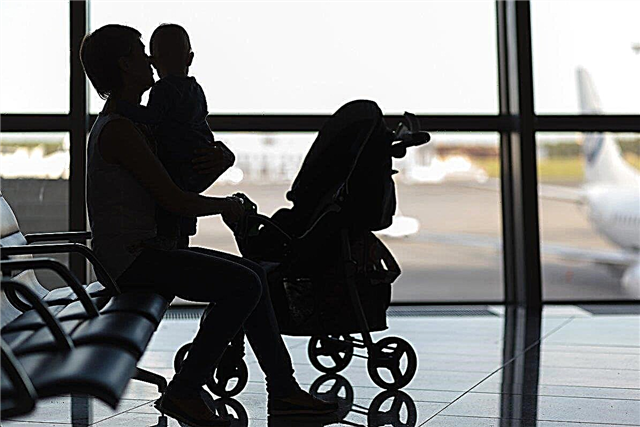Some statistics
According to the WHO, giardiasis is widespread. About 500 million people worldwide have manifestations of the disease. Approximately 30% of the population of Russia is infected with lamblia, especially often the disease is diagnosed in babies attending children's groups.
What is giardiasis?
Giardiasis is a parasitic disease caused by a single-celled microorganism - lamblia. The parasite was first noticed back in the 19th century, when the inventor of the microscope, Livenguk, discovered lamblia in the feces.
What does lamblia look like?
The parasite can exist in two forms: vegetative and cystic.
- Vegetative (mobile) form. It is a single-celled, tear-shaped organism with 4 pairs of flagella and a special attachment disc. The parasite needs the flagella to move through the small intestine, and the disc helps to adhere tightly to the intestinal wall.
- Cystic (motionless) form. Serves as an adaptation of lamblia to adverse conditions. If the parasite is unable to attach in the right place, it enters the large intestine. The conditions in the large intestine are not suitable for the life of the protozoan; lamblia turns into a round cyst.
 In this form, the parasite enters the environment with feces. Giardia in the form of a cyst can exist for a long time, wait for suitable environmental conditions, and if it gets into such conditions, it can again turn into a vegetative form.
In this form, the parasite enters the environment with feces. Giardia in the form of a cyst can exist for a long time, wait for suitable environmental conditions, and if it gets into such conditions, it can again turn into a vegetative form.
Where do lamblia come from in children?
 Due to its ability to form a cyst, lamblia live in the environment for a long time. For example, a parasite can live in water for up to 5 weeks, on soil for about 3 weeks, and on vegetables and fruits for up to 48 hours. The parasite dies if the temperature drops below 13 degrees and when exposed to ultraviolet radiation.
Due to its ability to form a cyst, lamblia live in the environment for a long time. For example, a parasite can live in water for up to 5 weeks, on soil for about 3 weeks, and on vegetables and fruits for up to 48 hours. The parasite dies if the temperature drops below 13 degrees and when exposed to ultraviolet radiation.
The main source of infection is humans. The parasite cysts are excreted in the feces of the patient. Failure to comply with the rules of personal hygiene, insufficiently well-washed hands after visiting the restroom serve as a tool for the spread of lamblia.
But giardiasis can be contracted not only from humans. Dogs, cats, cattle, rodents are also susceptible to disease and secrete cysts in the feces.
For infection with giardiasis, 10-100 parasite cysts are enough. Isolation of cysts in the same person is uneven. The most dangerous patient is on the 9-12th day of the disease, when the most parasites are excreted (more than a million cysts in 1 g of feces). This period is manifested by subsiding diarrhea, improving the patient's condition.
The transmission mechanism of giardiasis is fecal-oral, when swallowing parasite cysts.
Ways of infection with the parasite.
- Through the water. Giardia cysts can survive for a long time, up to 3 months, in water. Water from natural sources, wells, open reservoirs is dangerous for consumption. Only boiling is guaranteed to clear the water from the parasite. Since the size of Giardia cysts is very small, not all filters are able to cope with this task.
- Contact-household way. Most often, children become infected with giardiasis through the contact-household route in preschool institutions, children's groups. A sick child does not observe the rules of hygiene and transfers the parasite cysts to household items. The rest of the babies become infected by contact with infected toys, dishes, furniture, towels. Bad habits of putting your hands in your mouth, sucking your finger or gnawing on a pencil greatly increase the chances of contracting giardiasis.
- Food route. Infection with giardiasis occurs in the case of the use of unwashed products on which there are parasite cysts. Insects, flies, cockroaches can carry cysts and infect food.
It is easy to get infected with giardiasis; it is enough to eat foods contaminated with cysts, drink thermally untreated water, or do not wash your hands before eating. It is not for nothing that giardiasis is also called "the disease of dirty hands."
How does giardiasis manifest in children?
The signs of giardiasis in babies are varied and depend on the state of the child's immunity. The disease can occur both acutely, with vivid clinical manifestations, and in an erased form. Sometimes it is difficult to determine giardiasis; asymptomatic course occurs.
 The disease in children is more common in an acute form, the main symptoms of which are the following signs.
The disease in children is more common in an acute form, the main symptoms of which are the following signs.
- Diarrhea. Diarrhea is the most common symptom of the disease. The nature of the feces with giardiasis changes, the feces become liquid, with an unpleasant odor, an admixture of mucus, usually yellow. Sometimes diarrhea alternates with constipation.
- Indigestion. The work of the intestines is disrupted, gas formation increases, and bloating occurs. Nausea and vomiting are symptoms characteristic of the acute form of the disease, rarely occur in chronic course.
- Abdominal pain. Increased flatulence, flatulence, improper bowel function lead to spasms and pain around the navel and in the stomach.
- Temperature rise. There may be a slight increase in temperature when lamblia first gets into the child's body. It is characteristic of the acute form of giardiasis and is combined with intoxication and deterioration in the general condition of the baby.
- Loss of appetite. Against the background of a general deterioration in the condition, the appetite of the little one also changes. With an asymptomatic course, there may be no changes in appetite.
- Malabsorption. Disruption of bowel function and frequent loose stools lead to decreased absorption of nutrients in the intestine. The kid does not receive enough nutrients, vitamins and minerals and begins to lose weight.
- Skin changes. Lack of vitamins is manifested by skin symptoms, the skin becomes dry, seizures appear in the corners of the mouth, and cracks appear on the lips. Sometimes there is an increase in pigmentation, a marbled pattern of the skin.
- Deterioration of health. All this leads to a deterioration in the general condition of the baby, the baby becomes irritable, capricious, gets tired quickly. If giardiasis is not recognized for a long time and the correct treatment is not prescribed, chronic malaise leads to a lag in the physical development of children.
- Allergic reactions. Giardia multiply in the baby's body and release toxins that are absorbed into the bloodstream. Toxins suppress the functioning of the immune system and provoke the development of various allergic reactions, atopic dermatitis. Why do allergies and coughs occur in children with giardiasis? Giardia lives only in the intestines and does not enter the lungs in any way, why is coughing considered one of the signs of giardiasis? The cough is a response to the introduction of toxins, often of an allergic nature. And the reduced immunity with giardiasis provokes the development of chronic bronchitis.
- Neurological disorders. Constant intoxication and vitamin deficiency lead to a disorder of the nervous system. In addition to irritability and anxiety, there are nervous tics, hand tremors, teeth grinding at night.
Why are giardiasis dangerous in children and is it necessary to treat giardiasis?
This issue is a cause for controversy among doctors. Many people consider giardiasis a dangerous disease that poisons the body, causes chronic diseases and requires immediate treatment.
 Other doctors, including Dr. Komarovsky, consider only the acute form of giardiasis dangerous. The doctor insists that treatment requires diarrhea lasting more than 10 days, or if there are no signs of other intestinal infections and Giardia cysts are found in the stool.
Other doctors, including Dr. Komarovsky, consider only the acute form of giardiasis dangerous. The doctor insists that treatment requires diarrhea lasting more than 10 days, or if there are no signs of other intestinal infections and Giardia cysts are found in the stool.
We can say for sure that it is necessary to understand the expediency of treatment in each case. The manifestations of giardiasis in children are diverse, the disease can affect many body systems, and it can be asymptomatic.
With a small number of cysts in the intestine, the human body can cope on its own and "remove" lamblia into the environment without harm to the patient.
A doctor can recognize giardia in a child and determine the need for treatment, evaluating the results of diagnostic tests.
Diagnosis of giardiasis in children
Several diagnostic methods are used to detect lamblia in a child.
- Stool analysis. Analysis of feces for scatology is considered the most reliable method for detecting lamblia. For analysis, experts propose to donate fresh feces, in which case it is possible to identify live mobile lamblia. But 20-30 minutes after collecting the analysis, lamblia pass into another form - cystic, in which they remain for a long time. Thus, in a pre-collected analysis, the cysts of the parasite can be determined, which also confirms the infection with lamblia. For the reliability of the result and prevention of false diagnoses, doctors recommend checking the feces for lamblia several times within 2-3 weeks. Can lamblia be detected in the liver? Indeed, at the beginning of the 20th century, it was believed that giardia live in the liver and bile ducts. But over time, it was found that bile has a detrimental effect on the parasite, protozoa can live only in the small intestine.
- Analysis of the duodenal content. A rather complicated research method, in which a special capsule with reagents is taken, attached to a nylon thread and lowered into the duodenum. In the intestine, the capsule dissolves, the reagent enters the intestinal lumen and shows the presence or absence of lamblia.
- Blood test for giardiasis. Immunological blood test for giardiasis is a controversial examination method. It determines the immune cells that have formed in response to the introduction of lamblia. But a feature of the disease is the possibility of self-healing when the body copes with a small number of parasites.
 In this case, the immune cells remain, and the lamblia cysts in the feces may no longer be. The opposite situation is possible, when lamblia entered the child's body, and immunity has not yet formed. Thus, a positive blood test for giardiasis does not indicate the need for treatment.
In this case, the immune cells remain, and the lamblia cysts in the feces may no longer be. The opposite situation is possible, when lamblia entered the child's body, and immunity has not yet formed. Thus, a positive blood test for giardiasis does not indicate the need for treatment.
The most reliable, simple and inexpensive way to examine a child for lamblia is to analyze feces.
How to treat giardia in children?
The main goal of giardiasis therapy is to remove lamblia from the small intestine.
For the treatment of giardiasis in children, a three-stage scheme is used.
- First stage. Treatment begins with the reduction of intoxication and strengthening the body's defenses. An important role is played by a diet for giardiasis, which excludes bread, sweets, simple carbohydrates, milk and dairy products, preservatives from the patient's diet. It is recommended to include porridge, boiled meat, fruits and a sufficient amount of water in the diet. To facilitate the work of the digestive system and eliminate intoxication, sorbents, enzyme and antiallergic drugs are prescribed. The first stage of treatment lasts 1-2 weeks, the diet is followed for 3-4 months.
- Second stage. Antiparasitic drugs come to the fore in treatment. Please note that at the beginning of therapy, an aggravation of the symptoms of the disease may occur, diarrhea may worsen, and rashes on the body may increase. This reaction is considered normal and lasts about three days. The duration of treatment and the choice of the drug should be agreed with the attending physician, usually the course lasts about a week. Due to the frequent use of antiparasitic agents, adaptation, addiction of lamblia occurs. Common medications may not work. Therefore, it is important to consult a doctor to decide on the choice of a medicine.
- Stage Three. Treatment at this stage is aimed at replenishing the body's strength, improving metabolism. In addition to enzyme therapy, probiotics and immunostimulants are prescribed. It is recommended to follow a diet, eat foods rich in pectin. The third stage lasts on average 2-3 weeks.
Treatment of lamblia in children with folk remedies
There are many alternative methods of treating worms, parasites, including lamblia in children. The use of lactic-garlic tinctures, tansy, birch buds and other means is widespread.
 Unfortunately, folk remedies cannot guarantee recovery, their effectiveness has not been proven, and the harm sometimes exceeds the benefits of treatment. A lot of time is spent trying to heal in this way, the disease can progress.
Unfortunately, folk remedies cannot guarantee recovery, their effectiveness has not been proven, and the harm sometimes exceeds the benefits of treatment. A lot of time is spent trying to heal in this way, the disease can progress.
Prevention of giardiasis in children
Like many other diseases, giardiasis can be prevented by knowing simple rules. In addition, the likelihood of re-infection with lamblia is not excluded, especially in childhood.
 Therefore, it is important to follow preventive measures.
Therefore, it is important to follow preventive measures.
- All family members, including the child, must strictly follow the rules of personal hygiene, wash their hands regularly.
- Vegetables and fruits should be washed thoroughly before use.
- Drink only boiled water, not all filters can remove lamblia from water.
- Do not let your child swim in water if you are in doubt about the quality of the water. A child may swallow lamblia cysts while bathing.
- Have a stool test for Giardia regularly.
Conclusions
Giardiasis is a widespread parasitic disease. No one is immune from infection with giardiasis; there are many cysts of parasites in the environment.
The symptoms of the disease are very diverse, the disease can manifest itself as severe deviations in the work of internal organs, or it can be asymptomatic. There are cases of spontaneous cure of giardiasis, when the body itself copes with the disease.
The main task of parents is to prevent illness, teach the child the rules of personal hygiene, and monitor the purity of the food consumed. This way you can protect your baby not only from giardiasis, but also from many other infectious diseases.



